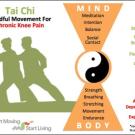Primary Care Blog
The United States is higher in its use of computed tomography (CT) scans than any other industrialized country. There were about 3 million scans done in the U.S. in 1980. By 2007 that number had risen to 70 million. A number of articles published in medical journals over the past few years have reported that excess radiation delivered by these scans will cause cancer deaths in some patients they were meant to help. One study from The National Cancer Institute estimated there would be about 29,000 future cancers related to scans done in 2007 alone. Experts have estimated that as many as a third of all imaging exams do not help the patient or contribute to better outcomes. Let me repeat that:
Experts have estimated that as many as a third of all imaging exams do not help the patient or contribute to better outcomes.
Do patients understand the risk of CT scans? A new study from the University of Washington showed 1/3 of people getting a CT scan didn't even know the test exposed their body to radiation. They also underestimated the amount of radiation delivered by a CT scan.
A CT scan delivers a mega-dose of radiation - as much as 500 times that of a conventional X-ray.
Patients, especially children, who have multiple CT scans are naturally at higher risk from excess ionizing radiation. In medicine we find "incidentalomas" all the time. If I get a Chest-Xray on a patient that I suspect of pneumonia, it might also show a small blip that cannot be explained. The recommendation from the radiologist may be to follow up with a CT scan. It takes clinical judgment to weight the risks versus the benefits of getting that scan. Perhaps the better choice is to deal with the infection and repeat the Chest X-ray in 3 months and see if it is still there.
Because CT scans are painless, usually covered by Medicare and Insurance (at high $$ cost), protect physicians from "missing something" and facing malpractice risk, and are often recommended to follow-up on an "incidentaloma", it is an overused test.
The CT scanner is a great advance in medicine and the ability to image the body in transverse sections and visualize organs and the brain has been truly life-saving. But patients should know and understand the risks. Here are some ways the patient can get involved:
- If a doctor orders a CT scan for a child, the parent should ask the technician to use pediatric-appropriate settings.
- Do not let a doctor or institution repeat a scan that was recently done (if you get 2nd opinions or are seen at a different place). All scans can be electronically shared, even via a flash drive if needed.
- Ask if a "low-dose" scan is appropriate.
- Try to avoid using the Emergency Department for health care. Your chances of getting a CT scan for a headache, car accident, stomach ache, pelvic pain or kidney stone is extremely high if you go to an ED. The doctor wants to cover all possibilities (even those that have low probability) in a short period of time. Bingo: order the CT scan.
- It's OK to ask, "How could the test result change my (or my child's care), if at all?"
- It's OK to ask, "Can you recommend an alternative, such as an ultrasound or MRI, that doesn't involve radiation?"
Understanding risks and benefits makes everyone healthier.




